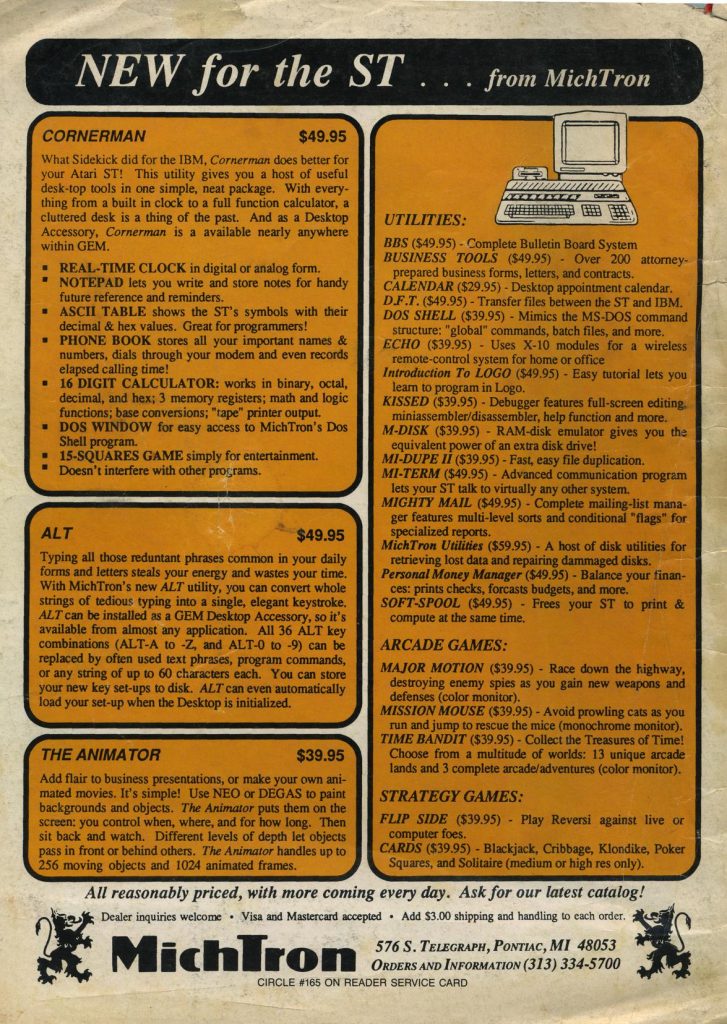Source: Computer & Video Game Magazines – ANALOG Computing – May 1985
There were a couple of good Atari 8-bit magazines published in the U.S. Overall, I think ANALOG was probably the best. The May 1985 issue includes:
Features
- BASIC AUTORUN.SYS File – A type-in BASIC AUTORUN.SYS designed for autobooting BASIC programs.
- Basic Burger – A type-in game that, from the description, sounds like a clone of Burger Time.
- Z-Plotter – A type-in program for plotting graphs of formulas that you enter.
- Boulder Bombers – A type-in game in which you must drop bombs to clear away a landslide that is blocking flood waters from receding.
- Loan Shark – A type-in payment calculator that allows you to calculate payments based on loan amounts and interest rates.
- Two-Fifty-Siz – A type-in program that will display 256 colors on screen at once.
Reviews
- US Doubler – The US Doubler is a hardware upgrade for the Atari 1050 disk drives that adds the capability to read and write double-density disks. With the included Sparta DOS, it also speeds it up significantly.
- Tax Command – Tax preparation software for your Atari 8-bit.
- Panak Strikes! – Reviews of various games including Realm of Impossibility (Electronic Arts), The Scrolls of Abadon (Access Software), Beach-Head (Access Software) – one of my personal favorites but on the Commodore 64, Spy vs. Spy (First Star Software), and The Serpent’s Star (Broderbund).
- Enhancement to BASIC – An enhancement to BASIC on Atari computers that adds new functions.
Columns
- Editorial – An overview of recent changes to the magazine including changes to the format, increase in telecommunications coverage, and more.
- Reader Comment – Letters from readers about back issues on disk, coverage in the U.K, a modification to Planetary Defense that allows you to use the Atari Touch Tablet, uses of a VCR with Atari 8-bit computers, and more.
- New Products – A brief look at new products including a new online game service called Games Computer Play, The Atari Computer Workout (book), Castle Cobbler and Subtraction Fair from Mindscape (kids educational software), The Print Shop from Broderbund, Bounty Bob Strikes Back, and more.
- Griffin’s Lair – A look at recent educational software titles including Tink’s Adventure (Mindscape) and Tuk Goes to Town (Mindscape).
- Ask Mr. Forth – A demonstration of the differences between FORTH and BASIC via FORTH versions of a couple of previously published BASIC graphics programs.
- On-Line – An argument against software piracy using unruly kids in a movie theater as an analogy.
- The End User – How to take the perfect screen shot. At this time, that meant using a film camera and photographing the monitor.

…and more!





